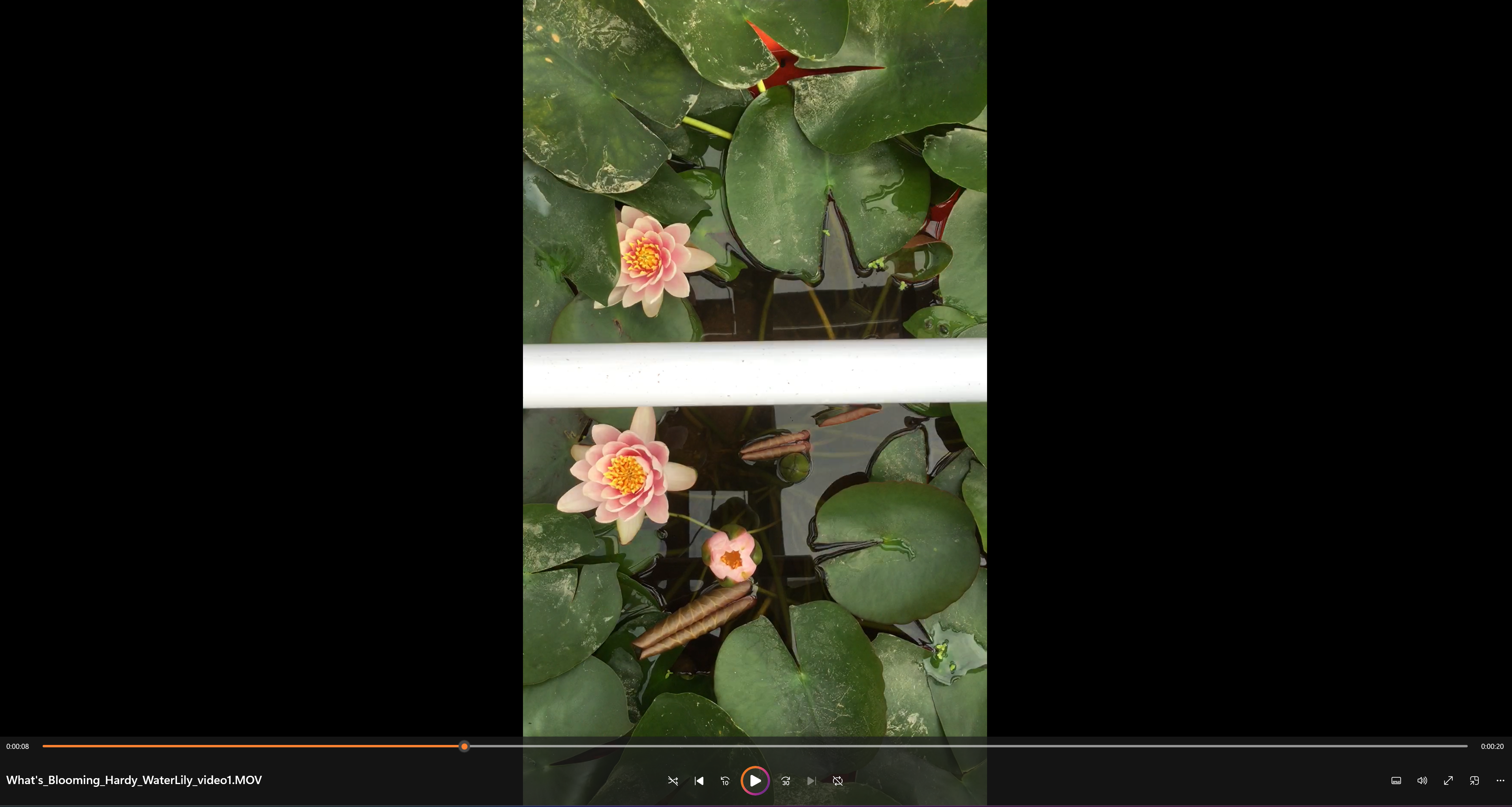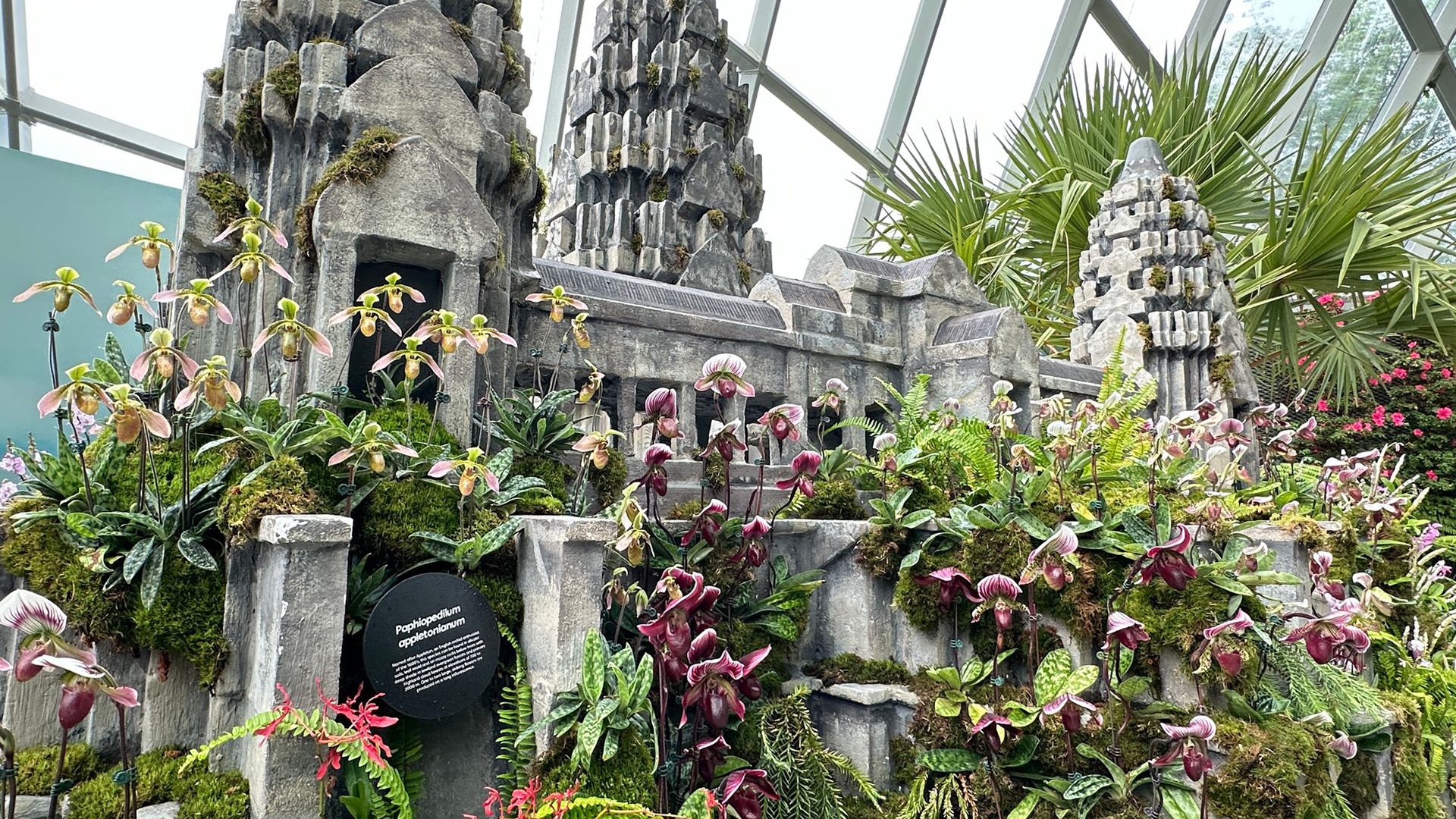Hardy Water Lilies
(Nymphaea Subgenus Nymphaea species, hybrids, cultivars)

“It took me a while to understand my water lilies… I grew them without thinking about painting them… A landscape does not pervade your senses in one day… Then suddenly I had a revelation and clearly saw these wonders on my pond. I took up my palette and paintbrush. And since then, I’ve hardly used any other subject.” – Claude Monet
The water lily family (Nymphaeceae) is the common name for a family of about 90 species of aquatic, floating-leaved, herbaceous, rhizomatous perennials. These include not just the cold-tolerant European white water lily (Nymphaea alba) and the purple-blue Egyptian water lily (N. nouchali and N. caerulea), but also the famously huge leaves of the giant water lily (Victoria spp.), so large and strong that some can support at least 75kg, about the weight of an adult human, if even distributed over the leaf!
The largest genus, Nymphaea, encompassing about 60 species, is divided into two distinct groups: hardy day-blooming species native to temperate regions of the world and which are more cold-tolerant, and tropical day-blooming or night-blooming water lilies, native to tropical and subtropical regions. There are also hundreds of hybrid cultivars in each group! All members of this genus have rounded leaves with a prominent notch and showy flowers, but there are many ways to tell them apart!
 Yes, you can tell apart hardy and tropical water lilies! The three easiest characteristics to use are flower position, petal shape, and stamen shape. Hardy lilies have flowers that float on the water or are supported on short stems less than 12 cm above the water, almond-shaped curved petals, and curling yellow stamens with no pointed appendage. Tropical day-blooming water lilies (middle) have flowers supported 30cm or higher above the water, thinner, longer petals, and pointed-tip stamens with an appendage usually the same colour as the flower petals. Tropical night-blooming cultivars (subgenus Lotos), open from 10pm at night to 10am-2pm in the day and have rounded petal tips and toothed, heavily-veined leaves. These photos are all of water lily cultivars grown in-house as part of a research trial prior to our Impressions of Monet: The Garden show, as these are the first time we are cultivating hardy water lilies at Gardens by the Bay under controlled conditions
Yes, you can tell apart hardy and tropical water lilies! The three easiest characteristics to use are flower position, petal shape, and stamen shape. Hardy lilies have flowers that float on the water or are supported on short stems less than 12 cm above the water, almond-shaped curved petals, and curling yellow stamens with no pointed appendage. Tropical day-blooming water lilies (middle) have flowers supported 30cm or higher above the water, thinner, longer petals, and pointed-tip stamens with an appendage usually the same colour as the flower petals. Tropical night-blooming cultivars (subgenus Lotos), open from 10pm at night to 10am-2pm in the day and have rounded petal tips and toothed, heavily-veined leaves. These photos are all of water lily cultivars grown in-house as part of a research trial prior to our Impressions of Monet: The Garden show, as these are the first time we are cultivating hardy water lilies at Gardens by the Bay under controlled conditions
Hardy water lilies, such as those cultivated and immortalized by Monet in his Nymphéas cycle of over 250 paintings, are a group of 6-7 Nymphaea species belong to the subgenus Nymphaea. Mostly native to northern temperate Europe, Asia, and North America, they grow and flower best in water temperatures between 20-25°C. All hardy water lily species have pure white flowers, with the exception of the yellow water lily (N. mexicana) native to parts of the southern United States and northern Mexico, and the Swedish red water lily (N. alba var. rubra), native to two cold water lakes in Sweden, and the pink-petaled N. odorata var. rosea, native to the northeast and north-central United States. These were eventually used as parents to breed the pink, red, yellow, apricot, and multi-hued flowers of modern water lily hybrids, including some of the first yellow, fuchsia, and pink hardy hybrids, bred by French nurseryman Joseph Bory Latour-Marliac and exhibited at the 1889 World's Fair in Paris, where they won first prize in their category and caught the attention of many, including Claude Monet.
 Impressions of Monet: The Garden features four of the water lily cultivars grown by Claude Monet and sourced from Latour-Marliac, the same French nursery from which Monet purchased his water lilies. Three of those four cultivars are shown above. A total of ten hardy water lily cultivars were grown in-house at Gardens by the Bay for the Impressions of Monet: The Garden display.
Impressions of Monet: The Garden features four of the water lily cultivars grown by Claude Monet and sourced from Latour-Marliac, the same French nursery from which Monet purchased his water lilies. Three of those four cultivars are shown above. A total of ten hardy water lily cultivars were grown in-house at Gardens by the Bay for the Impressions of Monet: The Garden display.
In his very first order of aquatic plants from French nursery Latour-Marliac, Monet ordered both water lily species and hybrid cultivars and (Nymphaea spp. and hybrids) and lotus (Nelumbo nucifera). Many of the new pink, red, or yellow-flowered hybrid cultivars bred by Latour-Marliac were exceedingly vigorous in Monet’s pond once established and had to be planted in pots to be kept from spreading uncontrollably. Unfortunately, the lotuses never grew well and may have died out for a variety of reasons: because the water was too cool, too deep, or the soil cover too much, or possibly because of pests and diseases. If not, lotuses and not water lilies could have been Monet’s muse!
Most people don’t realise that in addition to being a celebrated painter, Claude Monet was an ardent gardener and horticulturist who found great fulfilment in designing, planting, and tending his gardens. “Aside from painting and gardening, I am good for nothing,” he declared. As one of the most prominent Impressionist painters whose technique was characterized by small, thin brush strokes to depict the ever-changing quality of light and essence of the subject, it is perhaps no surprise that Monet became transfixed by water lilies, which he considered a bridge between the sky, water, and garden plants.
This time-lapse video of a hardy water lily cultivar shows how the flowers open and close over the course of the day, in response to changes in light intensity. Each flower only lasts from 3-5 days before closing and sinking beneath the water.
The fleeting, ever-changing qualities of light on water captivated Monet. One of his masterpieces is the collection of eight panels of water lilies, gifted to France and painted specifically for permanent display in two custom-designed egg-shaped rooms at the Musée de l’Orangerie. These eight panels feature scenes of water lilies and the reflections of trees from sunrise to midday, and sunset, capturing also the changes in bloom of the water lily flowers as they opened around dawn and closed in the afternoon to early evening.
Indeed, Monet painted more than 250 water lily themed paintings in the last 30 years of his life! Out of over 2,500 paintings, drawings, and sketches produced by Monet over the course of his lifetime, he confidently declared: “My garden is my most beautiful masterpiece.”
See our recreation of Monet's "most beautiful masterpiece", some of the very same water lily cultivars that Monet grew in his water garden, and distinguish hardy and tropical water lilies yourself at our Impressions of Monet: The Garden display in Flower Dome, running now through 17 September, 2024!
Written by: Janelle Jung, Senior Researcher (Research and Horticulture)
A transplanted pake (Hawai'i-born Chinese), she's finding her own Singaporean roots. Every plant has a story, and Janelle helps discover and share these with colleagues and guests, hoping to spark a mutual plant passion! Ask her what plant she named her cat after!




/1000x1000-thumb-scabiosa.jpg)